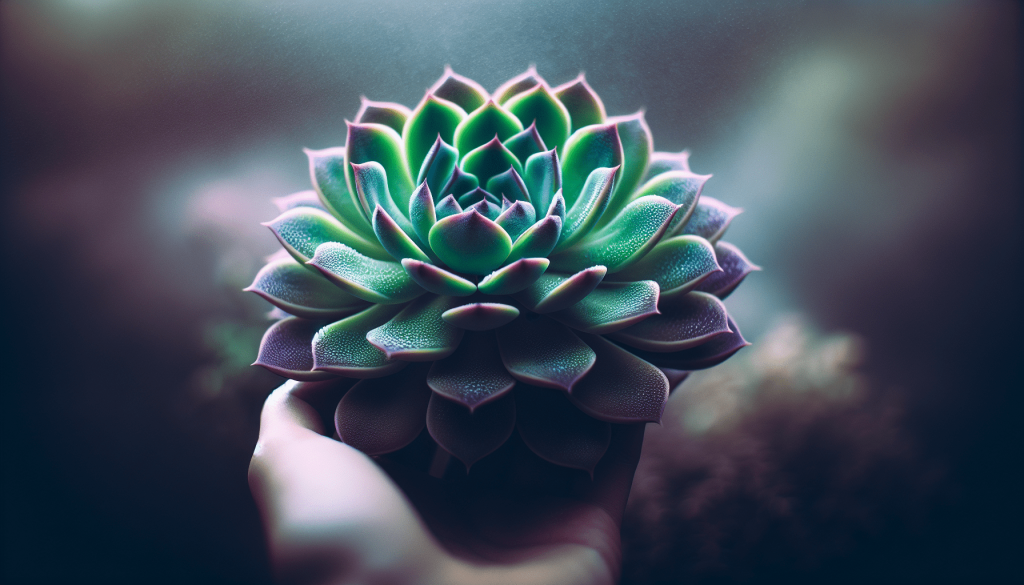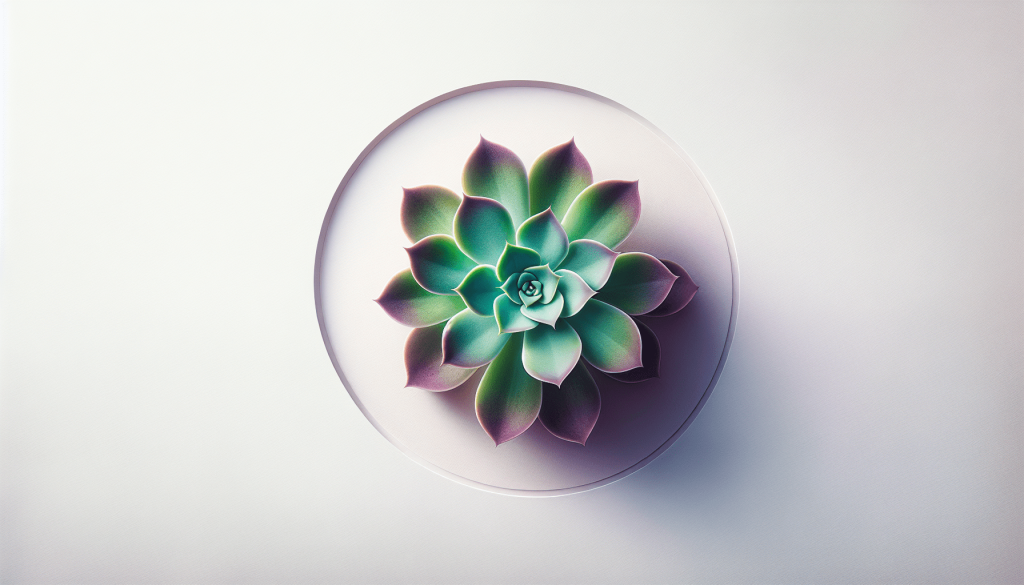This post may contain affiliate links. As an Amazon Associate, we may earn commissions from qualifying purchases.
Have you ever gazed at your collection of succulent plants and wondered about multiplying them? It’s a bit like looking at a favorite garment and dreaming of having it in every color and size. Succulents, with their vibrant greens and quirky shapes, are not only visually appealing; they’re also some of the most forgiving plants, making them perfect candidates for propagation. But how do you go about taking these lovely plants and creating new life from them? Buckle up, and let’s explore the delightful journey of succulent propagation together.
Understanding Succulent Propagation
Succulent propagation is like a magical art form; it takes patience, a gentle hand, and a smidge of botanical know-how. But fear not, dear reader! You don’t need to be a wizard to master it. The beauty of propagation lies in its simplicity.
What Is Propagation?
Propagation is the process of creating new plants from a variety of sources such as seeds, cuttings, or other plant parts. When it comes to succulents, propagation typically involves using parts of the plant’s body, such as leaves, stems, or offsets, to produce a new plant. This might sound a bit intimidating at first, but it’s actually quite straightforward, and once you get the hang of it, incredibly satisfying.
Why Propagate Succulents?
Propagating succulents isn’t just for those with green thumbs. You might want to propagate your succulents for various reasons: perhaps you’re looking to expand your collection without buying more plants, or maybe you’re presenting gifts to friends (because let’s face it, anyone would be charmed by a tiny succulent). Whatever your motivation, propagation is an eco-friendly, cost-effective way to grow your garden.
Getting Started with Succulent Propagation
Before you embark on your propagation adventure, there are a few basics you should know. From understanding the materials you’ll need to selecting the best time to propagate, a little planning can go a long way.
Essential Tools and Supplies
To get started, you’ll need some basic materials, much like a painter needs brushes and a canvas. Here’s what you’ll want on hand:
- Sharp, clean scissors or a knife: To ensure a clean cut, which is crucial for successful propagation.
- A shallow dish or tray: Useful for rooting leaves or cuttings.
- Well-draining soil: Crucial for preventing rot, as succulents don’t appreciate too much moisture.
- Small pots or containers: For planting new succulents once they’re ready.
- Optional: Rooting hormone: To encourage growth, though often not necessary for succulents.
Best Time for Propagation
Timing, as they say, is everything. When it comes to propagation, the best time to start is during the active growing season, typically spring or early summer. During this period, succulents are in their peak growth phase, making it easier for them to take root and flourish. However, if you find yourself eager to propagate outside of this time, don’t fret! With careful attention, you can still achieve success.

Leaf Propagation
One of the most rewarding methods of propagating succulents is through leaves. Watching a new plant grow from a single leaf feels nothing short of miraculous.
Step-by-Step Guide to Leaf Propagation
-
Select a Healthy Leaf: Look for a mature, healthy leaf—ideally one from the lower part of the plant that isn’t too small or too damaged. A good leaf will often snap off cleanly from the stem.
-
Prepare the Leaf: Let the leaf dry in a shaded area for a few days until the cut end has calloused over. This step is vital as it prevents the leaf from rotting when it comes into contact with soil.
-
Lay the Leaf Flat: Place the calloused end on top of well-draining soil. Unlike planting seeds, you don’t need to bury the leaf; it’ll take care of rooting itself.
-
Water Sparingly: While your leaf is beginning its transformation journey, water it lightly every few weeks. Too much water can lead to gremlin-like issues (you don’t want your leaf to rot).
-
Wait for Roots and Shoots: Over the coming weeks, tiny roots and possibly even a new plant will begin to emerge from the end of the leaf.
-
Transplant if Necessary: Once it has developed substantial roots and a new rosette, it’s ready for potting. Carefully move it to its new home and observe its growth with pride.
Common Mistakes in Leaf Propagation
Though it sounds almost magical, leaf propagation can hit a few snags. Here are some common pitfalls to avoid:
- Too Much Moisture: Remember, succulents are desert plants and thus, can easily suffer from over-watering.
- Rushing the Process: Show a little patience. Leaves take their own sweet time to grow roots.
- Incorrect Lighting: Ensure your leaves get plenty of indirect sunlight to aid in their growth.
Stem Cuttings
If leaf propagation is like waiting for bread to rise, stem cuttings are more akin to slicing store-bought dough and tossing it into the toaster—quicker and, perhaps, more foolproof.
Step-by-Step Guide to Stem Cuttings Propagation
-
Choose the Right Stem: Identify a healthy segment of the succulent with several leaves. Avoid stems with flowers as they require more energy and could hamper root development.
-
Cut the Stem: With your clean knife or scissors, cut a piece of stem at least a couple of inches long. Remember to callous over the cut end by allowing it to dry for a few days.
-
Potting the Stem: Once calloused, insert the cut end of the stem into well-draining soil. It doesn’t take much—just enough soil to support the stem upright.
-
Care and Watering: Monitor the soil moisture. Keep the soil slightly damp just until you notice root growth, then revert to sparse watering like its grown-up counterparts.
-
Roots and Growth: Stem cuttings tend to root more quickly than leaves. In a few weeks, you should see growth signs, which is your little plant’s way of saying it’s ready to thrive.
Benefits and Challenges
Stem cuttings are a bit more reliable than leaf cuttings. They usually root faster and might show growth sooner. However, they require more initial plant material, meaning you’re risking a larger chunk of your beloved plant. Always cut with precision and care to minimize any trauma.

Propagating from Offsets or Pups
Ah, offsets! These little doppelgängers of the mother plant make propagation as easy as pie. Not all succulents produce offsets, but for those that do, this method is quick and painless.
How to Propagate from Offsets
-
Locate an Offset: Consider offsets as baby plants sprouting at the base of the mother plant. Wait until they are sizable enough, about half the size of the mother plant is a good rule of thumb, before removing.
-
Gently Detach the Offset: Use your fingers or a clean knife to carefully dislodge the offset from the parent plant. Try to keep its roots intact for better re-establishment.
-
Planting the Offset: Plant the offset directly in soil, it’s generally ready for this move almost immediately. Having its own root system allows for a smoother transition.
-
Care and Placement: Treat it like a member of the family—adequate sunlight and a nurturing environment until it finds its independence.
Special Considerations
Propagation via offsets is nearly foolproof as long as you’re gentle with the little ones. This method ensures genetic continuity and is typically faster since the offsets often come equipped with their own root systems.
Water Propagation: A Modern Twist
For those who like to keep an eye on the progress of their plants without digging around in soil, water propagation presents a visually satisfying alternative.
Steps to Water Propagation
-
Select Your Candidate: Suitable for leaf or stem cuttings, select your cutting and prepare it as normal.
-
Use Water as a Medium: Place the cut end of the leaf or stem in a container of water. Only the very tip should be submerged to avoid rot.
-
Monitor Root Development: Keep the water clean and fresh, and watch for roots to sprout over several weeks. Once substantial roots have developed, transfer the cutting to soil.
Advantages and Drawbacks
Water propagation offers the perk of visibility, allowing you to cheer on those little roots. However, be prepared for a transition period when moving to soil, as the cutting requires some time to adjust to a new medium.
Troubleshooting Propagation
Like any good hobby, propagation has its share of challenges. You might encounter some obstacles—fear not, solutions are right around the corner!
Common Propagation Issues
- Rotting: Occurs from too much moisture or insufficient drying time before planting.
- Lack of Growth: Could be a result of too little light or unsuitable environmental conditions.
- Wilting: Often due to transplant shock, especially if roots are damaged or unaccustomed to their new home.
How to Address Problems
- Adjust Watering: Ensure you’re sticking to the light watering schedule required.
- Optimize Sunlight: Modify the plant’s environment to include plenty of indirect sunlight.
- Re-evaluate Environment: Ensure that the soil and pot size are appropriate.
Nurturing Your New Succulents
You’ve done it! You’ve successfully propagated your succulents. But the journey doesn’t end here. New plants need specific care to flourish.
Soil and Potting Considerations
Succulents enjoy well-draining soil and pots that offer the same properties. Choose pots with drainage holes and soil formulated for cacti and succulents to ensure your new plants thrive.
Routine Maintenance
Just like us, your new succulent plants appreciate a little TLC. Rotate them once a week to ensure even growth, and don’t forget, less is often more when it comes to watering. Think of it as a polite reminder that too much love could actually drown them.
Enjoy the Process
Ultimately, propagation is about the experience as much as it is the end result. It offers a unique way to connect with nature and expand your little green family. Enjoy the challenge and the reward, and don’t forget to share your newfound knowledge with fellow plant enthusiasts.
Succulent propagation is a satisfying adventure, filled with small triumphs and lessons in patience. With the right approach, and a bit of humor along the way, you’ll soon have a thriving collection of succulents that are not only beautiful but tell the story of your journey as a plant parent. Here’s to greening your thumb and growing your garden!








